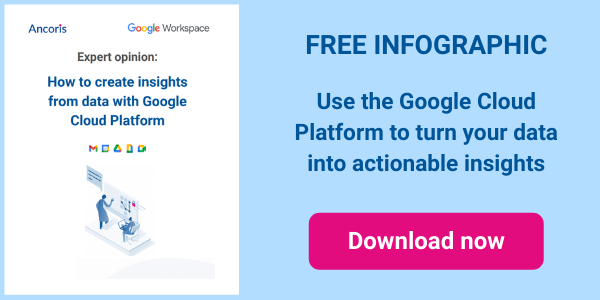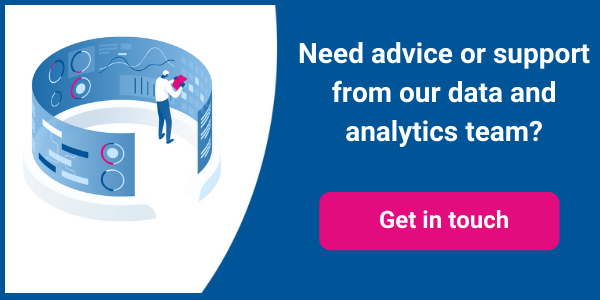Today's most successful companies understand the power of unifying data across the organisation in order to drive transformation of their operations and create more value.
It's not having data that gives companies a competitive advantage, but what they're able to do with it. All of the examples below use data that is already being collected.
Many companies are held back by legacy data technologies, with siloed data, that is not giving the answers needed in a timely manner. If your business want to get value out of your data more easily — you should consider moving to a modern data analytics platform.
Below are five examples of the impact that integrating, managing and using data effectively can have.
1. Help frontline staff deliver better customer experiences
Giving frontline staff the data they need to do their jobs more effectively and quickly can have a huge impact on how they serve customers.
When a DIY retailer gave in-store staff a mobile app with information about stock levels and where in the store items are sold, they empowered staff to become more helpful. Staff could more easily and quickly take customers to the right part of the store, confirm whether they have an item in stock, even if a customer can't find it on the shelf , and check if a nearby store has stock and reserve it if their own store is out of stock.
2. Reduce costs by optimising operations and supply chains
A maintenance services company handling around 40,000 jobs each week, was taking days to schedule them to its engineers. They wanted to minimise the distance engineers travelled while making sure they were sending an engineer with the right skills, tools and parts.
By combining data on jobs, engineers' skills, vans and parts, the company was able to create a system that cuts the time taken to schedule each week's work to minutes, while increasing the numbers of jobs engineers can handle each day. In addition, control room staff can now see, in real time, if there are issues which mean work has to be reallocated and then quickly find the nearest suitable engineer and send them the job information.
3. Increase customer engagement with personalised content
One of the ways to reduce churn and increase revenues, is to give customers more of what they love. A social media platform for cyclists — which allows like-minded cycling enthusiasts to upload, share, comment on and consume content — wanted to help users find the content relevant to their specific interests.
By combining data sets about the latest content with data about user activity, the company was able to create a recommendation engine that ensures each user sees the content they’re most interested in as soon as they log in. That keeps users coming back day after day and encourages them to stay longer, increasing revenues from ad impressions and driving engagement with the company's other brands.
4. Accelerate product development and adoption
Understanding how customers actually use products and services can provide valuable insights when considering which new features should be developed — or even where there's a gap in the market for an entirely new product.
A software developer that provides cloud solutions to the construction industry is using operational data to understand how customers are using its products. Product managers can use those insights to drive product development, while customer-facing teams can identify opportunities to cross-sell related solutions.
5. Understand the impact of business decisions on cash flow
With the current turmoil in supply chains, utility costs, the labour market and customer budgets, it's harder than ever to figure out and balance your future cash flow and reserves. Our CFOLab solution lets you use data from a range of operational systems, to understand the impact of business decisions on your cash flow.
For example, you can use CFOLab to:
- Predict the impact of making changes to your HR costs, from hiring or cutting staff to changing your pension, bonus and commission plans.
- You can model the impact of varying the payment terms for specific customers or suppliers when negotiating with them.
- Calculate the impact of steps like deferring VAT or taking up different options for financing investment.

